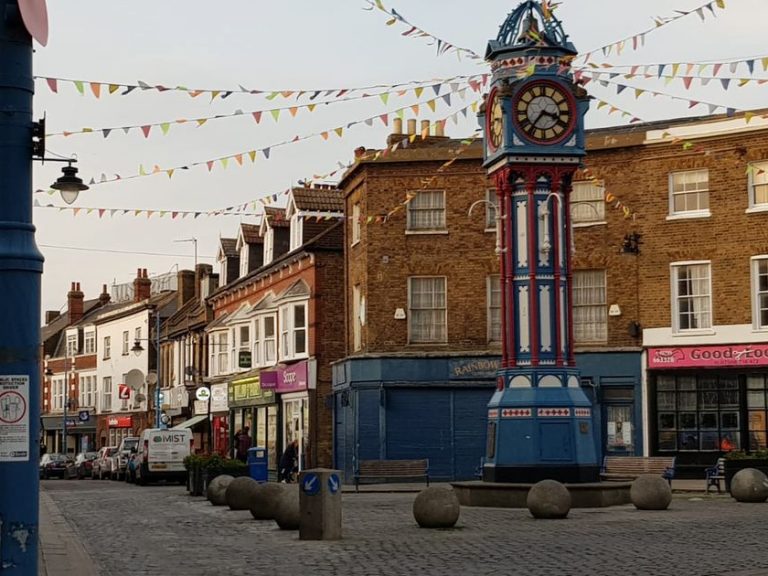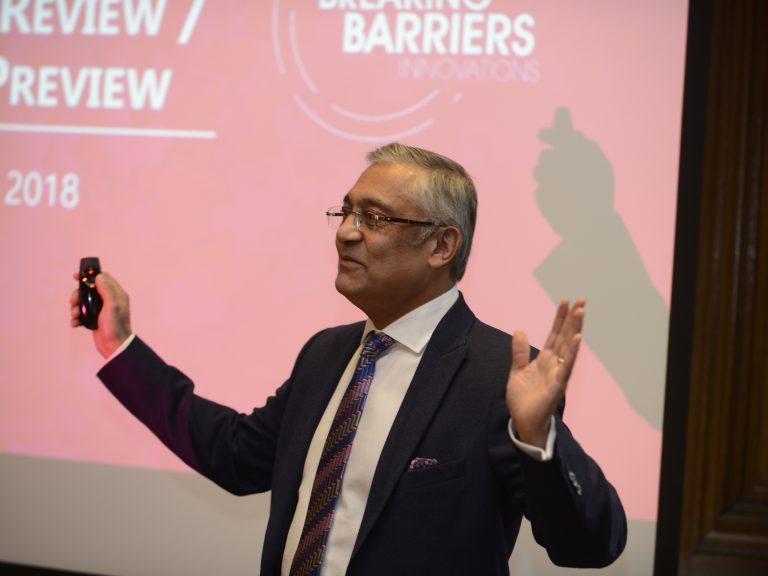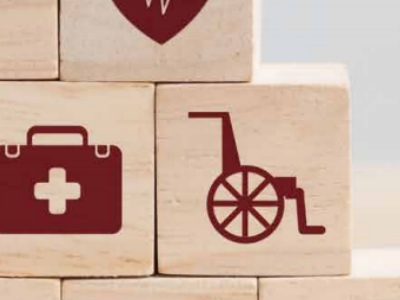Health, Housing and the Playbook for a Better Future:
In Conversation with Lord Patel (GovTech Leaders interview)
Professor Lord Patel of Bradford tells us all about a new report that explores housing and the built environment and the impact it has on health – and the all-new Playbook created to help local authorities foster greater collaboration.
This article is republished with permission from GovTech Leaders.
Breaking Barriers Innovations (BBI), the independent research programme that informs radical improvement of public services using locality-driven, joined-up approaches as opposed to top-down driven blueprints, has launched a report that explores the key factors from housing and the built environment and the impact on health in England.
Crucially, this cross-sector report – BBI Health and Social Care Programme 2018: HOMES (Healthy Outcomes Making Environments Safer) – also contains a ‘Playbook’ detailing a range of tools and methods that can be used by the NHS, Local Government, and partner organisations to build a sustainable approach to healthier homes and safer environments for all communities. This Playbook is designed to develop a ‘one public sector’ approach that moves organisations away from siloed working and towards meaningful sharing, greater collaboration and joined-up thinking and efforts.
Professor Lord Patel of Bradford OBE, chair of Breaking Barriers Innovations and co-author of the report, says that this Playbook is a much-needed tool – and one that is long overdue, that stems right back to the birth of Breaking Barriers Innovations.
“A number of years ago I came across a company called DragonGate, which was working on rationalising estates through public sector hubs. They were trying to develop an environment where lots of agencies and organisations – public and private – would work together in a kind of one-stop-shop,†he told us.
“I was Chairman of a Hospital at the time and I thought, ‘this is exactly what we need to do with health and social care’. I was involved with the hospital, so I was focused on beds and operations, rather than public health and primary care, despite the fact that I could see the need for all organisations to get together and really make a difference on improving people’s health. We were, for example, spending huge amounts of money on delivering diabetes care and there was an element of collaboration, but we were failing to do anything to address the fact that a third of children in the city centre were obese. Surely, we should have been spending money on prevention – but that meant moving money away from the NHS and into local authorities or sharing funding for a common goal or purpose.
This was something that frustrated me immensely. I had some great ideas about what we should do with hospital care, using new technology, developing the workforce and making people work together. So, along with DragonGate, we wrote a report that received a lot of support and sponsorship. That report was launched in 2016, included input from Hazel Blears, who had just left politics, and four of the six recommendations made are things the Secretary of State is now talking about. Despite the fact we launched it a day after the Brexit vote, people got excited and asked us for more of the same.â€
Joining up the dots
Lord Patel then proceeded to compile a report on the criminal justice system looking at criminal justice and how this is being realised in Manchester, where it was part of the devolution deal. The report looked at the journey into the criminal justice system, including prevention, education and employment, as well the journey after prison focusing on home, life and jobs.
“We were all about joining up the dots because if you only look at one aspect of anything, the siloed aspect doesn’t give you a solution. You can keep putting money into a single problem with no impact. That report was another success for us and we’ve continued to develop, focusing most recently on health and social care once again.â€
Lord Patel says that social care is, rightly so, a hot topic across the public sector organisations and that it’s an issue of national importance that urgently needs addressing. After all, in the next 10 to 20 years, the money needed to keep adult and child social care going would eat up entire budgets. The NHS continues to grow year-on-year, but over the last eight years money has been taken out of it, despite the fact that the population is getting older.
“Whether you look at housing, the criminal justice system, health or whatever, the pressures to operate as an individual organisation are immense and will leave them in trouble,†comments Lord Patel. “If you work with people you can bring them, thinking, innovation, service provision and funding together.â€
Housing and health
The Healthier Outcomes Making Environments Safer Report has been put together with the help of West Lancashire CCG, who helped to focus the content of the report, as Lord Patel explains.
“We thought we would be looking at health and social care but ended up looking into housing, thanks to our conversations with West Lancashire CCG. Nobody had ever asked us to look at health and housing together or the impact of housing and the environment on health.
“The CCG took us to an area called Digmoor on the edge of Skelmersdale. This estate was designed in the 1960s based on an American city idea where cars are kept away from people. This created a labyrinth of subways and walkways that didn’t work because they were dangerous, the school has high barbed wire fences around it, they have a CCTV camera brought in from the troubles in Northern Ireland. It’s a challenging place to live, but the local people have immense talents and creativity and there is a lot of support amongst residents to make things better.
“Local residents face a number of problems, unemployment is higher, health problems due to respiratory problems are higher…every deprivation factor is higher than the rest of the county. These are the people who will end up in hospital, who will suffer from long-term health conditions and who will end up in A&E. It’s common sense – there’s a clear link between housing and health and we need to support local people to make this better.â€
The Playbook solution
While the problem may be clear and common sense, the issues are failing to be addressed thanks to siloed working.
“National government operates in silos just like local government! People therefore haven’t brought the problems together. That’s despite the fact every £1 spent on preventing falls, for example, saves around £8. Hospitals still deal with the breaks, not the home conditions. If people can’t go home because their home conditions are poor they prevent other people from being able to use those beds. So we look at capacity in hospitals, not the root cause.
“This report has really opened our eyes to the links between environment, housing and health and how they should work together. Through the people we’ve engaged with at national and local levels it’s clear that there are a number of tactics the can be employed to sort the problems out. That’s why we’ve developed the idea of a Playbook.â€
The Playbook builds on the idea developed in sports such as American Football where teams will have different formations and play ideas based on the scenarios they’re faced with. This Playbook takes organisations down a scenario-based pathway with clear processes that will help move from A to Z.
“We’ve developed clear guidelines around the kind of mapping that’s required, what the dominance factor is that will bring people together to work on a solution. You do the mapping exercise, you select the dominant strategy, you sign up for it and you work on it. This includes looking at the workforce, which involves care workers, housing workers, GPs and health professionals. They might not know about each other’s specialisms, but if you train them in the basic passion you start to get people to work together. And that’s important. If it wasn’t for Brexit, the two biggest topics in politics at the moment are health and housing, but we are not doing enough about it. That’s staggering, because in my experience the 10 or 20 per cent of people who cost you most are seen by everyone. Social workers work with them, welfare officers see them, housing people see them, local authorities have to visit. In some case 10 or 12 people deal with an individual. Why not bring that together?â€
While Lord Patel is clearly excited about the launch of this report and Playbook, he’s even more excited about the potential to take the basic template into more areas.
“We’ve created a Playbook template for health and housing but you could easily develop the template for lots of other elements of public sector life. We would love to use the Playbook in several environments to see how it could apply. The methodology and processes covered in the Playbook are already being done, but there’s not a systematic way of pulling all separate processes together, based on the needs of people. You have to put people first and develop processes, solutions and strategies around them.
“For me, this is all about mapping, policies, working together, involving people and driving new skills. It’s then about introducing new technology, how to build and refurbish homes with digital solutions that will monitor health and wellbeing and identify incidents. If we can then use the data the technology generates we can easily develop a sophisticated Playbook that will help people through a range of scenarios. This is the first step. If we can’t force government departments together, at least we can get local organisations to work together for the benefit of the service user. That has to be our goal.â€
- The BBI Health and Social Care Programme 2018: HOMES (Healthy Outcomes Making Environments Safer) report and its executive summary are available at www.bbi.uk.com/homes.















